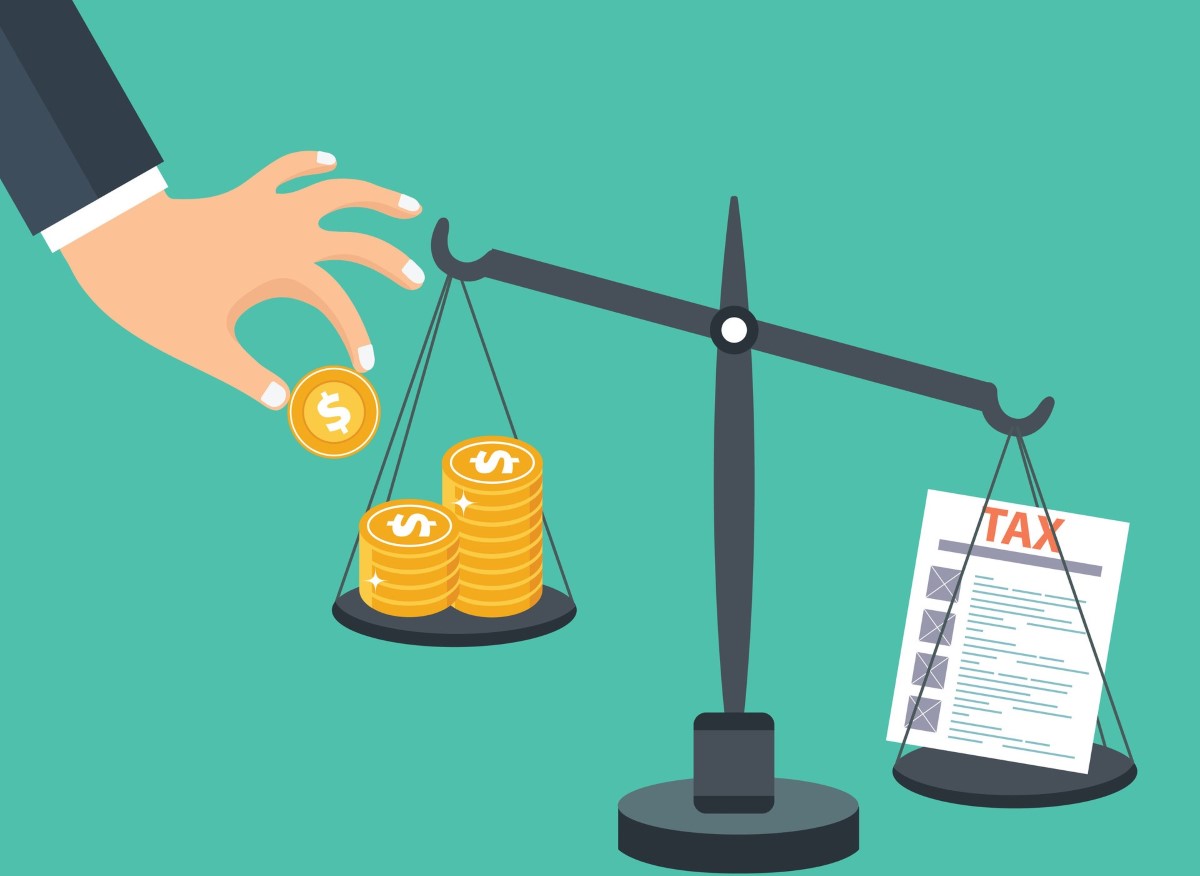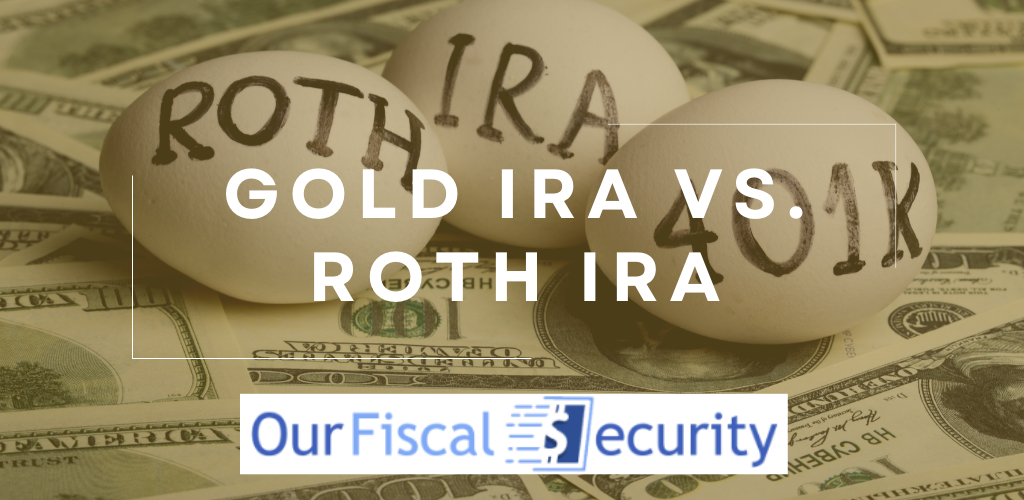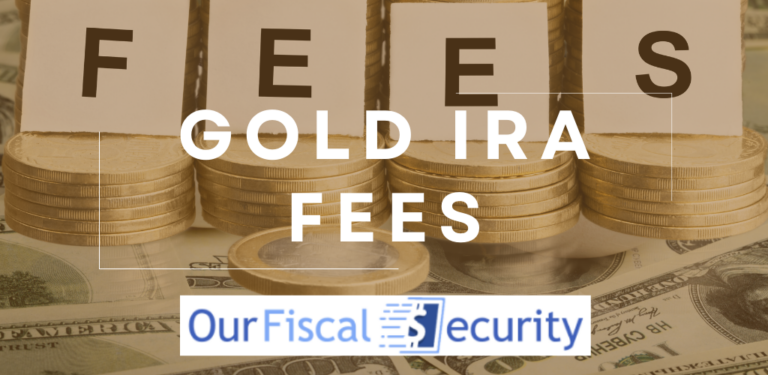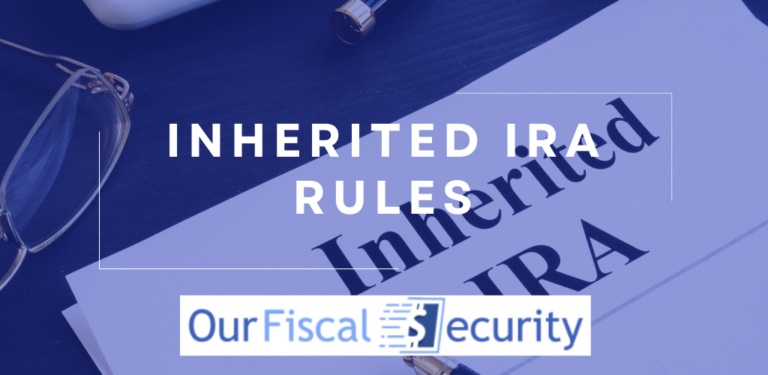Gold IRA Vs. Roth IRA
Retirement investments can be daunting, especially with the countless options available. Gold and Roth IRAs are two prominent choices often taking center stage in this discussion.
These investment vehicles let investors include physical gold and other precious metals in their retirement portfolio. Choosing between them is a crucial decision that can shape the trajectory of your investment journey.
Whether you’re a seasoned investor or just beginning your retirement plan, this comprehensive guide will help you make informed decisions.
Understanding Individual Retirement Accounts
At its core, an Individual Retirement Account (IRA) helps people plan for a secure and prosperous retirement. As tax-advantaged investment vessels, IRAs have various forms.
The Concept of an IRA Account
One of the key attractions of IRAs lies in their tax benefits. Traditional gold IRAs often offer tax-deductible contributions, providing immediate advantages in lowering taxable income. On the other hand, other IRAs feature after-tax contributions, leading to tax-free withdrawals during retirement.
Navigating the contribution limits and eligibility criteria for gold IRAs is essential for optimizing your retirement savings. Knowing the maximum annual contribution allowed and understanding the income thresholds for different IRA types ensures you make smart decisions.
Traditional IRAs are gateways to a diverse array of investment opportunities. Life is dynamic, and financial plans may need adjustments. Understanding the processes of rollovers and transfers within the self-directed IRA framework can help you adapt your retirement strategy.
Types of IRAS: Traditional, Roth, Gold IRAs
In this segment, we separate and compare the three prominent types of IRAs: Traditional, Roth, and Gold IRAs. If you wish to further delve into the details, consult our comprehensive guide and begin understanding the different IRA types.
- Traditional IRA
Contributions to a traditional IRA are often tax-deductible, providing an immediate advantage by lowering your taxable income. As your investment grows within the IRA, taxes are deferred until withdrawals are made during retirement. This traditional approach is a cornerstone of retirement planning for many investors.
- Roth IRAs
In contrast to their traditional counterpart, Roth IRAs operate on an after-tax contribution model. The allure of Roth IRAs lies in their promise of tax-free withdrawals during retirement. This unique structure makes Roth IRAs particularly attractive for those who might have to pay taxes in higher brackets.
The tax-free nature of withdrawals positions Roth IRAs as a strategic choice for investors seeking to optimize their liability in retirement.
- Gold IRAs
On the other hand, gold IRAs introduce a tangible and time-tested asset into the equation – physical gold. Recognized for its historical resilience during economic uncertainty, a gold IRA lets investors diversify their portfolios beyond traditional financial instruments.
This alternative investment option safeguards against inflation and market volatility. It provides a tangible and secure foundation for your retirement nest egg. Traditional and Roth IRAs are rooted in financial instruments like stocks, bonds, and mutual funds. However, gold IRAs introduce a new dimension with physical precious metals.
Role of IRAs in Retirement Planning
Diversification within your traditional or Roth gold IRA allows you to spread risk and optimize returns. Tailoring your portfolio to your risk tolerance is a cornerstone of effective retirement planning. Strategically using Roth and gold IRAs can be a powerful tool in managing your tax liabilities throughout your retirement journey.
What Is a Gold IRA?
Unlike traditional IRAs that rely on paper assets, a gold IRA introduces a tangible element – physical gold and other metals. Investors first open a self-directed IRA. This lets them choose and manage their assets.
Afterward, they can purchase physical gold through a reputable precious metals dealer and store it in an approved depository.
Gold IRA: Definition and Features
The defining feature of a gold IRA is the inclusion of physical yellow metal. Investors can buy and sell gold coins, bars, or other approved forms of the precious metal. Physical ownership strategically diversifies and fortifies your retirement portfolio against market volatility and economic uncertainties.
The Role of Gold in an IRA
Gold, renowned for its historic role as a store of value, introduces a layer of diversification to your IRA. The metal’s performance often moves independently. In times when the purchasing power of traditional currencies may erode due to rising inflation rates, gold tends to hold its value.
The Process of Setting Up a Gold IRA

Before diving into the process, equip yourself with a thorough understanding of the benefits, risks, and regulations surrounding gold IRAs.
- Choose a Reputable Custodian
Selecting a reputable custodian is the first step. The custodian oversees the logistics of your traditional gold IRA, ensuring compliance with IRS regulations. Thoroughly research potential custodians, considering fees, track record, and customer reviews.
- Open a Self-directed IRA
A gold IRA is typically structured as a self-directed IRA, granting you greater autonomy in selecting and managing your investments. Open an account with the chosen custodian, ensuring it can hold precious metals investments.
- Fund Your Traditional Gold IRA
It’s time to fund your account. You can contribute through transfers from existing IRAs or 401(k)s, rollovers, or direct contributions. Ensure compliance with IRS contribution limits and guidelines to optimize the tax-advantaged nature of your gold IRA.
- Find a Precious Metals Dealer
Choose a dealer with a proven track record, transparent pricing, and a wide selection of IRS-approved gold and precious metal products. Work closely with the dealer to make the necessary purchases and ensure the physical gold meets IRS standards.
- Secure Storage in an Approved Depository
You must keep physical gold investments in an IRS-approved depository. The chosen storage should meet stringent regulatory standards for safety and compliance.
- Periodic Account Management and Reporting
Stay informed about the performance of your gold investments, market trends, and any regulatory changes. Regularly review and, if necessary, rebalance your portfolio to align with your financial goals.
Costs Associated with a Gold IRA
Setting up and maintaining gold IRAs involves administrative processes. Some custodians may charge one-time or ongoing setup and maintenance fees. Approved depositories also charge storage fees to protect your physical gold and other precious metals. On the other hand, you have to pay the deals for purchasing, delivering, and storing the metals. Consider factors such as premiums over the spot price, shipping costs, and extra charges.
Beyond the primary costs, be aware of potential miscellaneous charges that could impact the overall expenses of your gold IRA fees. These may include fees for account closure and transfers.
Gold IRA Custodians and Their Roles
Custodians ensure self-directed IRAs, including gold IRAs, align with IRS guidelines. This includes overseeing the account setup, facilitating contributions, and ensuring all transactions follow regulatory standards.
On top of that, gold IRA custodians also handle the logistics of transporting, storing, and safeguarding the physical gold held within the account. While they do not provide investment advice, custodians can offer essential guidance on the aspects of a gold IRA.
Advantages and Disadvantages of a Gold IRA
Gold IRAs offer a unique avenue for diversification, reducing overall portfolio risk. As mentioned above, this metal’s tendency to move inversely to stocks and bonds can act as a hedge during market downturns.
Pros:
- Risk mitigation
- Diversification
- Wealth preservation
- High returns on investments (ROIs)
Cons:
- Lack of income generation
- Storage and custodial costs
- Price volatility
While it can act as a hedge, gold may also experience significant price fluctuations. This can impact the overall value of the traditional gold IRA.
Benefits of Investing in a Gold IRA
One of the potential perks of gold IRA is that gold’s unique characteristics allow investors to balance risk and return. This creates a diversified portfolio that may better withstand various market conditions. The metal’s relatively low correlation with traditional financial markets positions it as an effective tool for managing overall risk. Strategically allocating it within your IRA can contribute to a balanced investment portfolio.

Potential Risks and Drawbacks of a Gold IRA
Gold does not generate regular income, unlike assets such as dividend-paying stocks or interest-bearing bonds. Relying heavily on this metal may limit your ability to derive consistent cash flow from your investments. Storing physical gold securely comes with associated costs. Approved depositories charge hefty storage fees. Custodial services for managing the gold IRA also incur expenses.
Gold IRA: A Diversification Tool
By diversifying into physical precious metals, you introduce a tangible and enduring element that can withstand the test of time.
Gold IRA Vs. Market Fluctuations
Geopolitical events can trigger market fluctuations, introducing uncertainties across various asset classes. Gold IRAs are valuable for investors seeking stability and wealth preservation amid global events. Physical metal within a gold IRA is a tangible wealth preservation that stands apart from the paper assets susceptible to market whims.
What Is a Roth Gold IRA?
A Roth gold IRA is a specialized form of individual retirement account. It combines the features of a Roth IRA with the inclusion of physical gold and other precious metals as eligible assets. Roth gold IRAs offer investors a tax-advantaged way to hold gold within their retirement portfolio.
Roth IRA: Definition and Features
The distinguishing feature of a Roth IRA lies in its tax treatment, offering the potential for tax-free withdrawals during retirement. While contributions to a Roth IRA are not tax-deductible, this after-tax structure allows tax advantage on qualified retirement withdrawals.
Contributions and earnings are not subject to federal income taxes. This is unless the account has been open for at least five years and the holder is 59½ years old or meets certain other qualifying conditions.
- No Required Minimum Distributions (RMDs)
Unlike traditional gold IRAs, Roth gold IRAs do not require minimum distributions (RMDs) during the account holder’s lifetime. This flexibility allows investors to retain control over the timing and extent of their withdrawals.
- Diversification Options
A Roth gold IRA offers various investment options, allowing account holders to diversify their portfolios. People can tailor their investments from stocks and bonds to mutual funds and exchange-traded funds (ETFs).
- Eligibility and Income Limits
Roth IRAs are accessible to many investors. Still, there are income limits that determine eligibility. These limits may restrict or phase out contributions for higher-income earners.
The Process of Setting Up a Roth IRA
Before starting the setup process, assess your eligibility for a Roth IRA. Consider factors such as your income level, as limits may impact your ability to contribute to a Roth IRA.
- Choose a Financial Institution
Your options include banks, brokerage firms, and mutual fund companies. Evaluate fees, investment options, and the quality of customer services.
- Complete Necessary Paperwork
The next step involves completing the necessary paperwork to open your Roth gold IRA. This includes an application form and agreement outlining the terms and conditions of the account.
- Designate Beneficiaries
During the setup process, you will have the opportunity to select beneficiaries for your Roth IRA. This determines how the IRS will distribute your assets in the event of your passing.
- Contribution Planning
Determine the amount you plan to contribute to your Roth IRA. The IRS sets annual contribution limits, which may vary based on age and income.
- Fund Your Roth IRA
Like gold IRAs, you can contribute to Roth gold IRAs through electronic transfers, checks, or rollovers from other retirement accounts.
Costs Associated with a Roth IRA
Many financial institutions charge annual fees for maintaining a Roth IRA account. These fees can cover administrative costs, account management services, and other overhead expenses. Transaction fees may also apply when buying or selling investments within your Roth IRA.
You may encounter investment management fees if you opt for professionally managed funds or advisory services within your account.
Some institutions impose inactivity fees if there is minimal or no trading activity within Roth gold IRAs over a specified period. While Roth IRAs offer flexibility, early withdrawals of earnings (not contributions) before age 59½ may incur penalties in certain situations.

Roth IRA Contribution Rules: After-Tax Dollars
The IRS establishes annual contribution limits for Roth IRAs. As of the latest guidelines, people under 50 can contribute up to a specified amount. On the other hand, those aged 50 and older have a higher limit known as the catch-up contribution.
Also, income limits are based on your Modified Adjusted Gross Income (MAGI) and filing status. You must be aware of these thresholds and adjust your contributions accordingly. As your income approaches the upper eligibility limits, Roth IRA contributions may be subject to a gradual phase-out. You may still contribute, but the allowable amount reduces as your income increases.
Advantages and Disadvantages of a Roth IRA
Having a Roth IRA provides tax diversification in retirement. Since qualified withdrawals are tax-free, people with traditional and Roth IRAs can manage their taxable income during retirement, optimizing their overall tax situation.
Pros:
- Tax-free qualified withdrawals
- No required minimum distributions (RMDs)
- Flexible contributions
- Tax diversification
Cons:
- Income limits
- Potential legislative changes
- Investment risks
The returns on investments within the Roth IRA are not guaranteed. Investors must carefully assess their risk tolerance and strategy before opening an account.
Benefits of Investing in a Roth IRA
When talking about the benefits of a Roth IRA, there are plenty, particularly when making contributions. Regardless of age, investors can continue contributing to a Roth IRA if they have earned income. It’s advisable to keep funds invested for the long term. Still, you can withdraw contributions (but not earnings) penalty-free before age 59½ in certain situations.
Potential Risks and Drawbacks of a Roth IRA
Unlike traditional gold IRAs or employer-sponsored retirement plans, account holders do not reduce their taxable income in the contribution year, potentially impacting short-term cash flow.
Also, the allowable contribution amount may be reduced or phased out as your income increases. Converting funds from a traditional IRA or employer-sponsored retirement plan to a Roth gold IRA incurs taxes on the converted amount.
Roth IRA and Tax-Free Growth
A Roth gold IRA’s capital appreciation and dividends remain shielded from federal income taxes. As your investments generate returns, those earnings are reinvested, creating a compounding effect. Over time, this compounding can result in significant growth. Since it happens in a tax-free environment, your overall returns are maximized.
Roth IRA Withdrawal Rules
Roth gold IRA withdrawals rules are classified into two main categories: qualified and non-qualified. Qualified withdrawals are tax and penalty-free. To be considered qualified, a withdrawal must meet two primary conditions: the account holder must be at least 59½, and the IRA must have been open for at least five years.
On the other hand, non-qualified withdrawals refer to distributions that do not meet the criteria for tax and penalty-free treatment. Taking out earnings before age 59½ and the five-year holding period may result in taxes and a 10% early withdrawal penalty.
Comparing Gold IRA and Roth IRA
Before opening your IRA, consider the differences between the two options. By weighing the unique features of each, you can make decisions that align with your investment objectives.
Key Differences Between Gold IRA and Roth IRA
Assets within a gold IRA consist of physical gold and other precious metals like silver, platinum, and palladium. Investors may choose to buy coins or bars.
On the other hand, Roth gold IRAs offer a broader range of investment options, including stocks, bonds, mutual funds, ETFs, and other financial instruments. Liquidity in a gold IRA may be less immediate than traditional financial assets. Roth gold IRA investors can buy and sell assets through brokerage accounts, making it easier to access funds when needed.
Balancing Your Portfolio with Both Gold and Roth IRAs
While gold IRAs can hedge against economic uncertainties and market volatility, Roth gold IRAs offer a diversified mix of traditional financial assets.
Gold IRA Vs. Roth IRA: Risk and Return
A gold IRA’s risk-reducing factor lies in its role as a diversification tool. Including physical gold in your portfolio can counterbalance the risks associated with traditional financial assets. Through their diversified holdings, Roth IRAs offer the benefit of exposure to various asset classes.
Investors with a lower risk tolerance or a preference for tangible assets may find the stability of gold appealing. On the other hand, Roth gold IRAs are suited for investors with a longer investment horizon and a higher risk tolerance.
Conversion and Rollover Options: Gold IRA and Roth IRA
If you currently hold a traditional gold IRA and wish to include precious metals, you can explore converting it into a gold IRA. Work with a custodian specializing in precious metals IRAs. Evaluate the costs, storage requirements, and potential tax implications of converting a traditional IRA to a gold IRA.
However, if you have funds in an employer-sponsored retirement plan, such as a 401(k), you may consider rolling those funds into a Roth gold IRA.
Tax Implications of Gold IRA and Roth IRA
Contributions to gold IRAs are typically made with pre-tax dollars, similar to traditional IRAs. Withdrawals are taxed as ordinary income. The account holder’s income level determines the tax rate at withdrawal time.
On the other hand, contributions to a Roth gold IRA are made with after-tax dollars, meaning they are not tax-deductible in the year of contribution. Qualified withdrawals from Roth gold IRAs, including contributions and earnings, are tax-free.
Tax Considerations for Gold IRAs
The gold IRA tax regulations suggest that the distributions in a traditional gold IRA are taxed as ordinary income. The yellow metal itself cannot generate regular income. Any appreciation in the value of the precious metals is shielded from immediate taxation.
Tax Considerations for Roth IRAs
Investments within Roth gold IRAs grow tax-free. Roth IRAs do not mandate required minimum distributions (RMDs) during the account holder’s lifetime. Such accounts also offer estate planning advantages.
Avoiding Potential Tax Pitfalls
Withdrawing funds from retirement accounts before reaching the age of 59½ can result in early withdrawal penalties and taxes on the distributed amount. Avoiding premature withdrawals helps preserve the tax advantages of retirement savings. Sticking to RMD rules is essential to avoid unnecessary taxes and penalties.
Capital Gains and IRA Investments
Regarding traditional gold IRA accounts, capital gains within the account are tax-deferred. This means any appreciation in the value of investments does not trigger an immediate tax liability.
Roth IRAs offer a distinct advantage when it comes to capital gains. Investments within a Roth gold IRA grow tax-free, and qualified withdrawals, including capital gains, are entirely exempt from federal income taxes.

Deciding Between a Gold IRA and a Roth IRA
Consider your risk tolerance and investment objectives when choosing between a traditional gold IRA and a Roth gold IRA. The first option may appeal to those seeking a hedge against economic uncertainties. On the other hand, the latter alternative is well-suited for investors with a longer-term focus on tax-free growth.
Factors to Consider When Choosing an IRA
If you prefer tax-free withdrawals in retirement and are comfortable contributing with after-tax dollars, Roth IRAs may be suitable. However, a traditional gold IRA may be better if you prioritize stability and tangible assets to hedge against economic uncertainties. Consider the following points before choosing an IRA:
- Retirement time horizon
- Portfolio diversification goals
- Contribution limits
- Income eligibility
- Risk tolerance
- Tax preferences
Roth IRAs have income-based contribution limits, and high earners may be subject to reduced or phased-out contributions. Gold IRAs follow traditional contribution limits.
Who Should Consider a Gold IRA?
Gold IRAs often operate as self-directed IRAs, giving investors greater control over their investment choices. Choose this option if you are comfortable with a self-directed approach and want to actively manage your precious metal investments.
Who Should Consider a Roth IRA?
Consider Roth IRAs if you can let your investments grow over time without the immediate need for tax deductions. Funds within a Roth IRA accumulate earnings tax-free, providing a powerful tool for building wealth over the years.
IRA Selection: Investor’s Perspective
Incorporate estate planning objectives into your decision-making. As mentioned above, Roth IRAs offer such advantages. The inherited accounts maintain their tax-free growth potential for heirs. Consider the impact of IRA choices on your broader wealth transfer and estate planning strategies.
If you value greater control over your investment choices, consider a self-directed IRA. Gold and certain traditional IRAs operate as self-directed accounts.
Frequently Asked Questions
Go through the following FAQ section if you’d like to know more about different IRAs and their features.
- What Are the Main Differences Between a Gold IRA and a Roth IRA?
A gold IRA is a self-directed retirement account holding precious metals like gold, silver, platinum, or palladium. On the other hand, a Roth IRA is a tax-advantaged retirement account. It allows after-tax contributions, providing tax-free withdrawals in retirement.
- Can I Have Both a Gold IRA and a Roth IRA?
Each option serves a unique purpose within your investment strategy. The decision to have both depends on your financial goals, risk tolerance, and the desire for diversification.
- What Are the Tax Implications of a Gold IRA and a Roth IRA?
Investors contribute to a gold IRA with pre-tax dollars, providing potential tax deductions. However, you use after-tax dollars to make contributions to a Roth IRA. This offers no immediate tax deductions.
- What Are the Potential Risks and Benefits of a Gold IRA?
Gold is considered a safe-haven asset. It tends to appreciate over time. Adding tangible asset classes to your portfolio reduces risk. However, gold prices can fluctuate. Also, yellow metal does not generate regular income.
- How Can I Balance My Portfolio with Both Gold and Roth IRAs?
Assess the time horizon for each IRA. With a longer time frame, Roth IRAs can accommodate more growth-oriented investments. Diversify holdings within the gold IRA by considering various precious metals, like silver and platinum.
Conclusion
Each investment option has its unique advantages and downsides. Your decision hinges on various factors. A one-size-fits-all approach may not be the best fit for your financial goals. A gold IRA can be an inflation hedge, providing a store of value that has withstood the test of time. However, its returns may not match the potential growth of equities in the long run.
On the other hand, Roth IRAs provide tax advantages and flexibility, allowing you to enjoy tax-free withdrawals in retirement. Still, it lacks the physicality and historical stability that gold presents. Talk to a financial advisor and consider your risk tolerance, investment timeline, and overall financial strategy.






